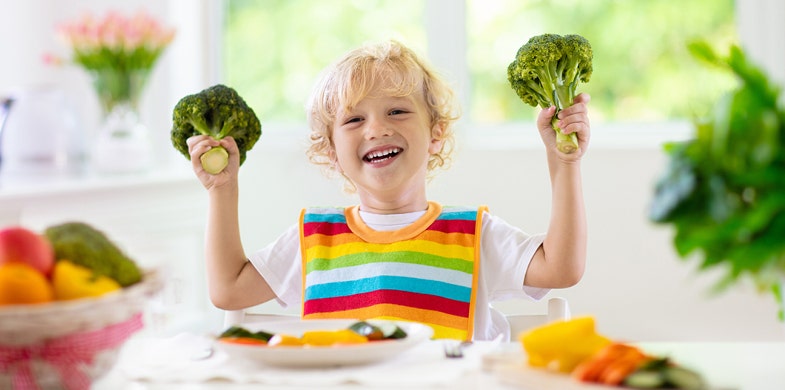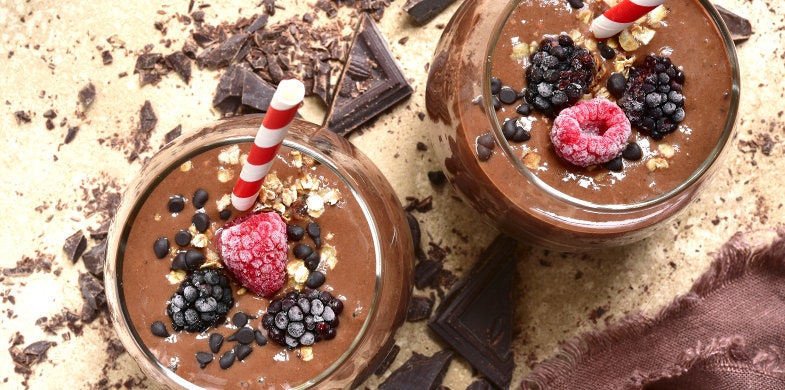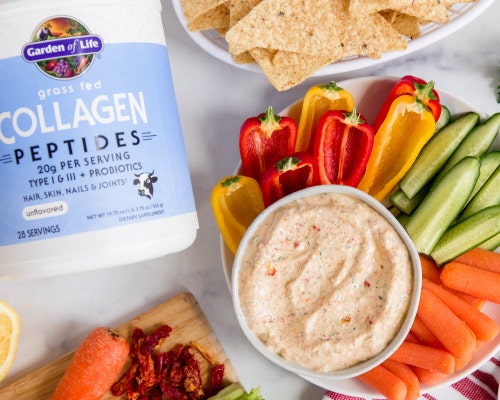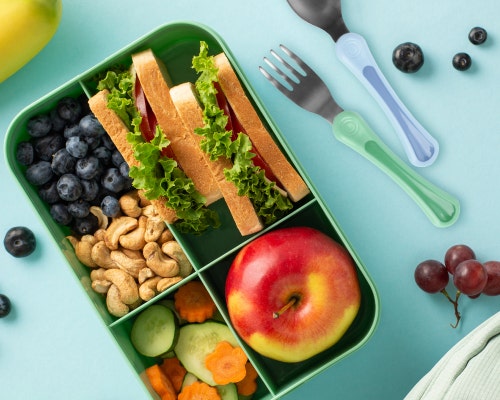

Let’s start with some basic tips for kids of all ages: With the new school routine, start a new eating routine. This begins with waking the kids up early enough to eat something before school. Studies show that children who eat breakfast perform better in school. We all know that we need to put gas in the car for it to run; well kids need fuel too and they run on a healthy breakfast. This doesn’t mean you have to cook every morning, later are some healthy and convenient recipes for breakfast from Chef Gwen. The good news is that as the provider of food, parents ultimately make the buying decisions as to what food comes into their homes. So, it all starts with stocking up on healthy food so that when your child is hungry, there is always healthy food or snacks on hand. Prepare snack boxes and keep them in the fridge and cupboard for them to eat or to grab on the way out the door.
Kid’s Healthy Eating Tips
-
Don’t fill your cupboards with sugary snacks, sodas, cookies, and highly processed foods that you know are not good for your kids because if you buy them, the kids will eat them!
-
Buy real foods (fresh food not packaged), prepare the food together, cook together and make mealtime family time.
-
Plan meals at set times so the kids know when breakfast, lunch and dinner are served. This helps to develop healthier eating habits and food choices versus ad hoc meals and snacking constantly.
-
Allow your kids some food choices within healthier options.
-
Try new recipes and new foods. Make food and mealtimes fun and enjoyable. » Never force them to eat anything.
-
Provide treats occasionally but try to make them “special” foods rather than unhealthy.
-
Discourage fast food, it should never be a staple.
-
Encourage your children to drink water.
The Child Brain versus the Adult Brain According to Harvard Medical School, children are more vulnerable than adults to miss a meal. The brain of a child is not just a scaled down version of an adult brain. It is larger in proportion to his or her body. Though the brain makes up only one-fiftieth of a child’s body mass, it uses about half of the body’s stores of energy. It is also changing rapidly—nerve cells are growing, and cell connections are adjusting rapidly in response to the environment. All of this increases the brain’s demand for energy. The Benefits of Breakfast Researchers in the United Kingdom designed a study to see if the size of the students’ breakfast affected their ability to do their work. The study reinforced the sage advice that children should eat balanced meals with sensible portions at the right times during the day. In fact, there is some evidence that the risk of obesity can be reduced by making sure kids have a classic “wholesome” breakfast that is shorter on sugared cereals and longer on milk, fruit, eggs and whole foods (Harvard Health Publishing, 2015).
Chocolate Raspberry Swirl


This smoothie is a great breakfast, lunch, or snack time smoothie for kids. Kid's will love the tasty raspberry and chocolate combo, moms will love the added kick of healthy protein.








